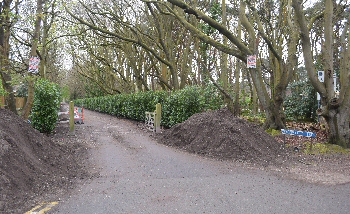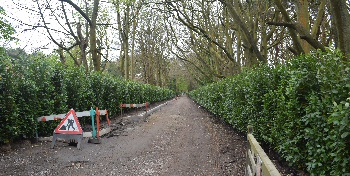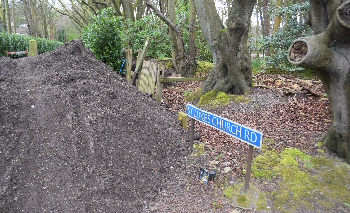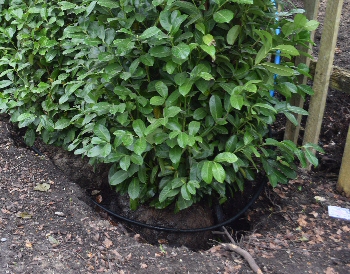 Your Online Newspaper for the Merseyside Area. |
|
| Latest Edition |
|
Archive |
|
PLEASE NOTE THAT SOME SECTIONS OF THIS PAGE ARE NO LONGER WORKING THIS PAGE IS NOW ARCHIVED FOR HISTORIC RECORD. |
|
> |
|
|
||||
|
|||||||||||||||||||||||||||||||||||||||||||||||||||||||||||||||||||||
|
|
|||||||||||||||||||||||||||||||||||||||||||||||||||||||||||||||||||||
|
|
|
||||||||||||||||||||||||||||||||||||||||||||||||||||||||||||||||||||
|
St. Luke's Road planting coursing worries
IF you go down to the woods today, you will be in for a surprise, well, we are not talking about the Easter bunny, but the sudden appearance of bushes along part of the tree lined St. Luke's Road. This has raised fears from some residents that the old horse chestnut trees, better known as conker trees, which are in wide spread decline, might now be at risk. In October 2016, experts told the media that they predict that 2 million horse chestnut trees will be lost within the next 15 years. The trees for many years have been a massive attraction for local children, wanting to collect conkers from them. The land they are located on is a very small strip of St Luke's Church Road, owned by the Firwood Estate, at the edge of Formby's Pine Woods. This section has been open to the public for over 100 years, we are told. Currently, there a public footpath:- it is part of the Coastal Path; and disputed bridleway on it. The road also acts as access to a section of road that is currently Council owned, servicing a few homes. The worry is also that this is a new move to remove public access. We have tried to email the owners for more information since being alerted to the changes being made. The Formby Civic Society have also commented that:- "We would have no real objection to the new planting of laurels along that part of St. Luke's Road which is now privately owned. It does now look however, as if it is a private driveway and not anything like its original design. This continuation of St. Luke's Road was once an 'Avenue' planted by the Formby Family and a very natural looking country lane." We would love to hear your views on this issue. Please email us to:- News24@SouthportReporter.com.
|
|
The National Trust is celebrating 50 years caring for the coast at Formby
THE conservation charity The National Trust, have cared
for 210 hectares Freshfrilds' coastline, since 12 April 1967, when it was
safeguarded through the Neptune Fund, set up specifically to purchase and
protect coast around the UK.
Justin Matthews, Ranger for the National Trust at Formby,
commented:- "50 years is a fantastic achievement and we are so proud to
reach this milestone. We couldn't do it without our dedicated staff and
volunteers and the support of our local community who work so hard to help care
for the coast, managing it and maintaining it for generations to come. We're
looking forward to the next 50 years and hope that everyone will join in the
celebrations by coming along to one of our events happening throughout the year
or just taking time out to enjoy this special place." |
|||||||||||||||||||||||||||||||||||||||||||||||||||||||||||||||||||
|
| |||||||||||||||||||||||||||||||||||||||||||||||||||||||||||||||||||||
|
|||||||||||||||||||||||||||||||||||||||||||||||||||||||||||||||||||||
| |||||||||||||||||||||||||||||||||||||||||||||||||||||||||||||||||||||















